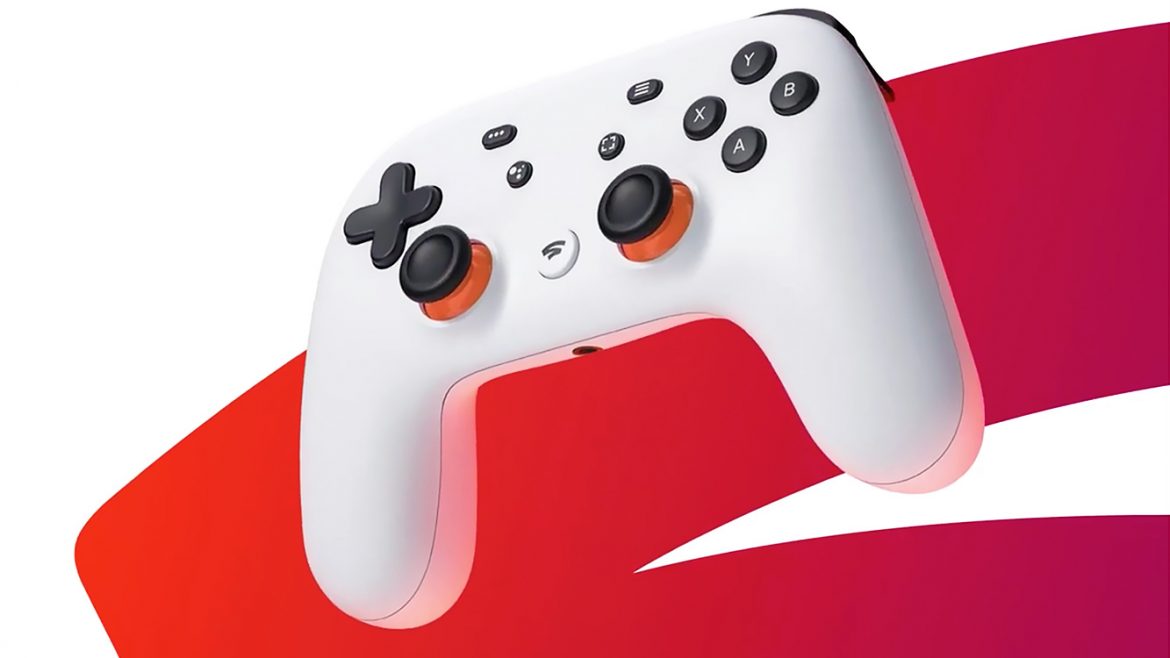TL;DR
Google Stadia enters the competitive game streaming arena promising an effortless gaming experience, but it struggles to deliver. While the core idea of no hardware upgrades and instant play is appealing, the reality is a mixed bag of inconsistent performance, limited game selection at premium prices, and a business model that doesn't yet match industry giants. Despite some comfortable hardware and a strong concept, Stadia feels like a premature launch that needs significant refinement in its library, pricing, and overall reliability. Is Google Stadia the future of gaming or just another ambitious project destined for the digital graveyard? Read the full review to find out!
Google’s history is marked by both significant successes and notable failures. Within three years, they ascended to become the dominant search engine (since 2001), relegating competitors like Altavista and Yahoo to historical footnotes, while others such as Bing and DuckDuckGo remain niche players. However, their forays into software and hardware have been less consistent. For every successful service like Gmail, YouTube, Google Docs, and Google Photos, there have been overambitious and quickly discontinued projects such as Google+ and Orkut (social media proved challenging for Google), Wave (which could have potentially evolved into a Slack-like platform), and Google Glass, which faded from the market as quickly as the initial hype surrounding the “controversial” connected glasses. Similarly, the Pixel phones, while competent smartphones, have not achieved widespread success outside the American mobile market (despite improvements over the Nexus line, which had limited impact). Other products, despite having sound underlying concepts, lacked the focus, investment, and user base necessary for success. Examples include Bump (a convenient way to exchange contact information by bumping phones together) and Chromecast Audio, a dedicated audio streaming dongle priced the same as the regular Chromecast (HD), which supported both video and audio. Consequently, the latter became the preferred choice.
Google Stadia – Premature Launch
Google Stadia currently appears to fall into the latter category of products with unrealized potential. Timing is crucial in technology. Successful hardware and software are rarely the first to market. Spotify did not invent music streaming, but they refined the concept of on-demand access to a vast music library and combined it with a viable technical infrastructure and business model. Windows was not the originator of the point-and-click operating system (that distinction belongs to Apple), but Microsoft’s OS undeniably achieved the largest market share. Google is now entering the highly competitive and lucrative gaming industry, specifically the game streaming sector.
With a somewhat ambiguous “games as a service” model (discussed further below), the objective is to deliver “the ultimate gaming experience” by streaming games from Google’s high-performance servers (boasting 10.7 TFLOPS of processing power, nearly twice that of the Xbox One X, which offers 6 TFLOPS). This promises games without installation or loading times, playable “anywhere, anytime” with a sufficient internet connection. This entails paying a recurring fee for the right to access the service. In the long term, this model is likely to become increasingly prevalent due to its profitability for service providers. Envision a Netflix or Spotify for games, providing access to a library of titles that is regularly updated. However, Google Stadia does not fully embody this model, at least not currently. Instead, it’s a streaming service that provides access to two “new” games each month with a paid Pro subscription (required for 4K, HDR, 60fps, and 5.1 sound). However, most games must be purchased at full price to be played via Stadia. The value proposition is not immediately clear.
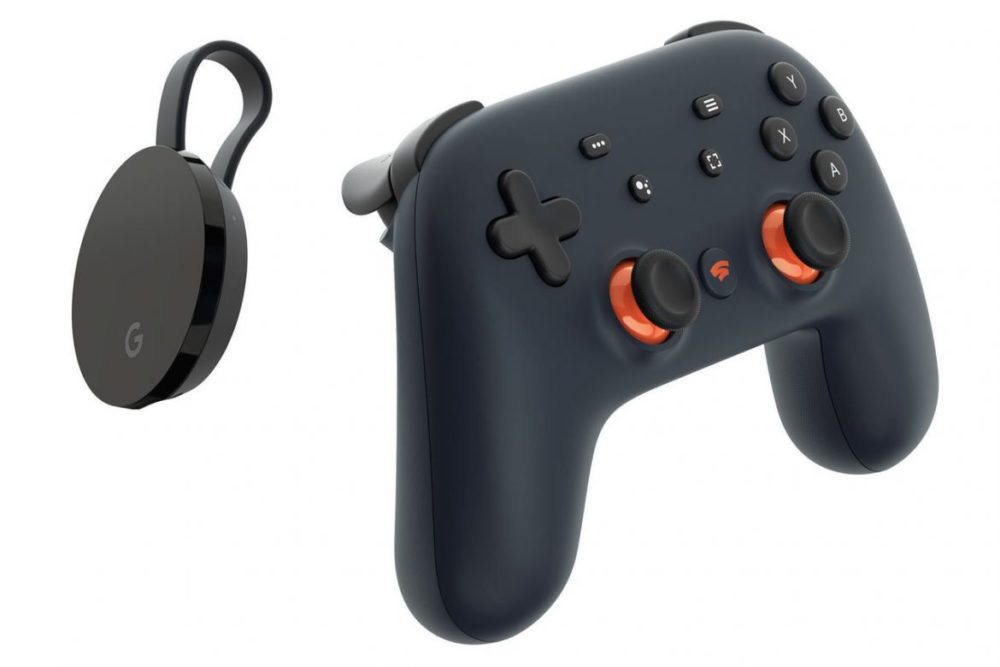
Value Proposition Questionable
Google plans to launch a free version of Stadia “during 2020,” presumably ad-supported (akin to Spotify Free) and lacking 4K, HDR, 60fps, and 5.1 sound, instead offering 720p with stereo sound and 30fps. This free tier will also not include any games. The current offering, Premier Edition, includes a Stadia game controller that connects via Wi-Fi and a Chromecast Ultra (supporting 4K streaming with HDR and 5.1), along with a three-month Pro subscription. In theory, no additional hardware is required, as Google manages the hardware infrastructure and upgrades, ensuring optimal performance if broadband speeds are sufficient. The stated requirement for Stadia with 4K, HDR, 60fps, and 5.1 is 35 Mbps, a speed readily available to the majority of the connected population. 10 Mbps is the minimum speed for basic service functionality. Our testing environment at senses.se utilizes a 1 Gbps fiber connection.
The core concept behind Google Stadia is eliminating the need to purchase and upgrade gaming hardware. While appealing, this model comes with caveats. Consoles typically cost between SEK 3,000 and 6,000 and can feel dated after a few years. A gaming PC is considerably more expensive and requires more frequent upgrades. Stadia offers a subscription model, but canceling the subscription forfeits access to purchased games. At SEK 1,200 per year, the cost of a Stadia subscription equates to the price of a console within three years. Furthermore, games purchased at full price (some at inflated prices, such as Rage 2) become inaccessible upon cancellation or discontinuation of the service, representing a complete loss of investment.
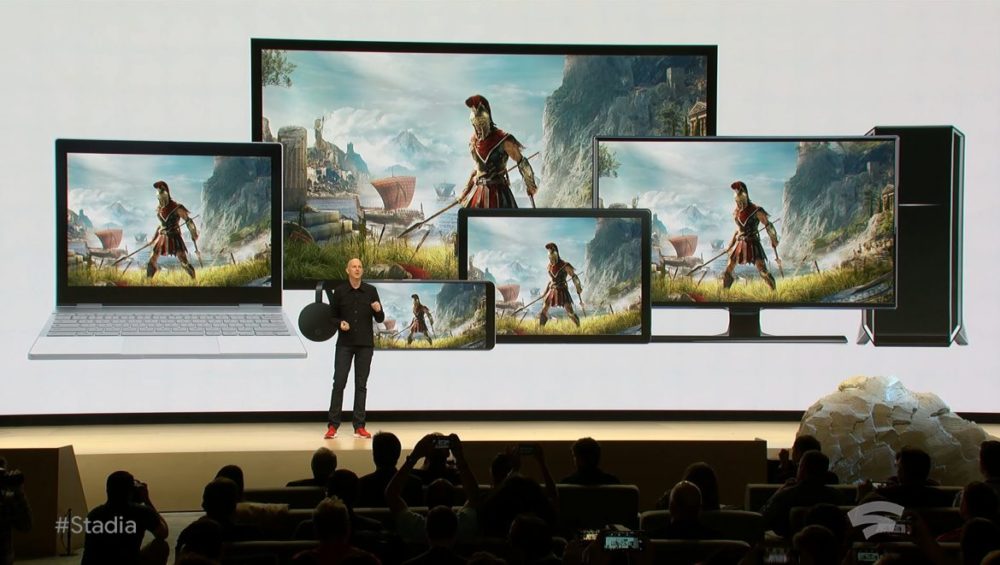
Game Selection and Pricing
Google offers a “rent-in-yourself-on-hardware-remotely” model, supplemented with two games per month. This approach mirrors the Xbox Live Gold and PS Plus subscriptions, which offer a selection of titles each month. At the time of this review, Google Stadia had been available for two months, offering Destiny 2: The Collection (from 2017), Samurai Shodown (2019), Tomb Raider (the 2013 reboot), and Farming Simulator 2019. While an acceptable collection, it lacks compelling titles that showcase the platform’s capabilities. Assassins Creed: Odyssey (2018) would have been an ideal demonstration of the format, but it must be purchased separately at a premium price (SEK 700), while the PS4 (Pro) version is available for under SEK 200. This pricing disparity extends to the other 21 games currently available on Stadia.
Google has acquired game studios to develop exclusive Stadia titles. The only exclusive game available at launch is Gylt, a stealth-horror game that is adequate but somewhat lacking in both stealth and horror elements. THQ Nordic also released Darksiders: Genesis on Stadia first, but it is not an exclusive title.

Ubisoft provided review codes for this assessment. In addition to AC: Odyssey, they also offer Just Dance 2020, which requires a Ubisoft account and a smartphone for motion tracking. This contradicts the “no installation time” promise. The smartphone app is required for Just Dance to track movements, as the Stadia controller is not compatible. Just Dance 2020 is a fast-paced, engaging game that offers both physical activity and dance instruction. However, the SEK 500 price tag on Google Stadia provides no added value over other console versions. Unlocking all songs in Just Dance 2020 also requires a subscription to the game’s Unlimited service, resulting in additional costs.

Trials Rising is an entertaining game where players navigate challenging courses on a motorcycle. On Stadia, the game runs smoothly, despite not being graphically demanding. The controls feel responsive, and the price of SEK 250 is reasonable. Upscaled graphics and 5.1 sound are implemented adequately, although the overall sound level is low in this and other Stadia games.

Stadia’s business model appears to be fundamentally flawed. The monthly subscription fee for two games is not competitive with services like PS Now or Xbox Game Pass, which offer a much larger library of titles. Google needs to offer a similar value proposition. While games are more expensive to produce than music or film, Netflix has demonstrated the viability of a subscription model for video content. Google Stadia faces established competition, and consumers expect a comparable offering.
Stadia’s unique selling points – eliminating hardware requirements, instant loading times, 4K resolution, 5.1 sound, and 60fps – are not consistently delivered. The difference between Stadia and an Xbox One X or PS4 Pro with an SSD is marginal. Installation times on modern consoles are relatively short. While Google Stadia offers quick loading times, it does not provide an instant-gaming experience. There are loading times and server response times to consider.
Performance and Reliability: A Mixed Bag
The central question is: how well does Google Stadia perform? Is game streaming ready for mainstream adoption? The answer is that performance is inconsistent, and game streaming is not yet fully mature. Our previous assessment concluded that game streaming is still years away from widespread adoption, a sentiment reinforced by recent experiences with PS Now and Stadia. The fact that major console manufacturers are retaining physical media drives in their upcoming consoles (Xbox Series X and Playstation 5) further supports this view.
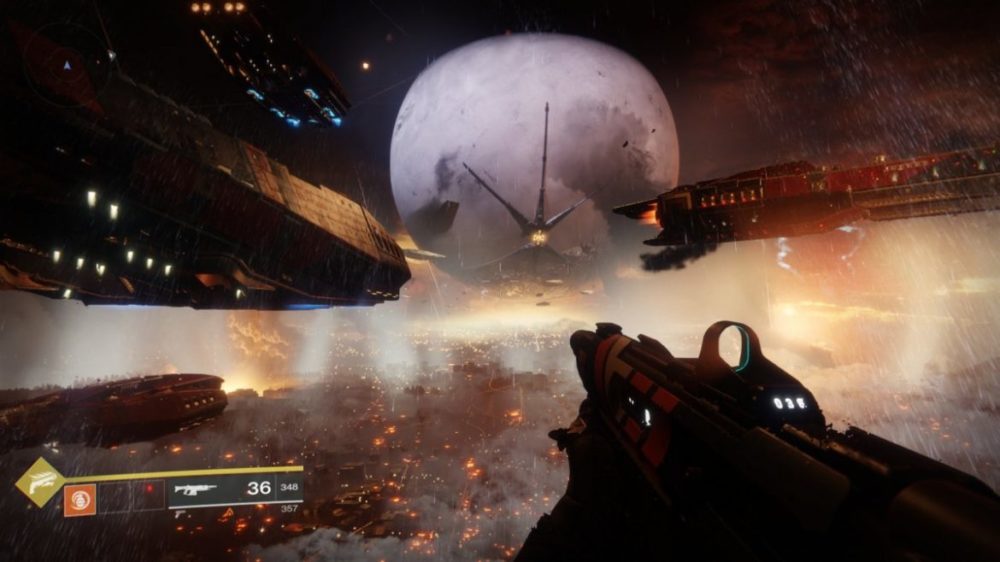
When Stadia performs optimally, the experience is impressive. Games load reasonably quickly and run smoothly on an OLED display. Destiny 2 demonstrates the platform’s potential, with excellent graphics, details, surround sound, and high resolution. While not quite on par with a high-end PC, it exceeds the performance of a PS4 Pro or Xbox One X. However, performance is inconsistent. Despite using modern hardware and a high-bandwidth internet connection, the experience fluctuates significantly. Destiny 2 can run smoothly one moment and then freeze or drop resolution during intense combat. Samurai Showdown suffered from graphical distortion and audio dropouts, particularly in the start menus. Tomb Raider performed the most consistently, but its seven-year-old graphics do not match the level of detail found in Rise of the Tomb Raider. Farming Simulator performed adequately, but its visual fidelity does not demand high-end hardware.
Latency is also a concern. Wolfenstein: Youngblood exhibits a 44ms latency in keystroke input, which, combined with a modern flat-screen TV’s response time, results in a noticeable delay. As Wolfenstein: Young Blood‘s resolution (1440p) and frame rate are comparable to the PS4 Pro and Xbox One X, the increased latency undermines the advantages of playing it on Stadia.
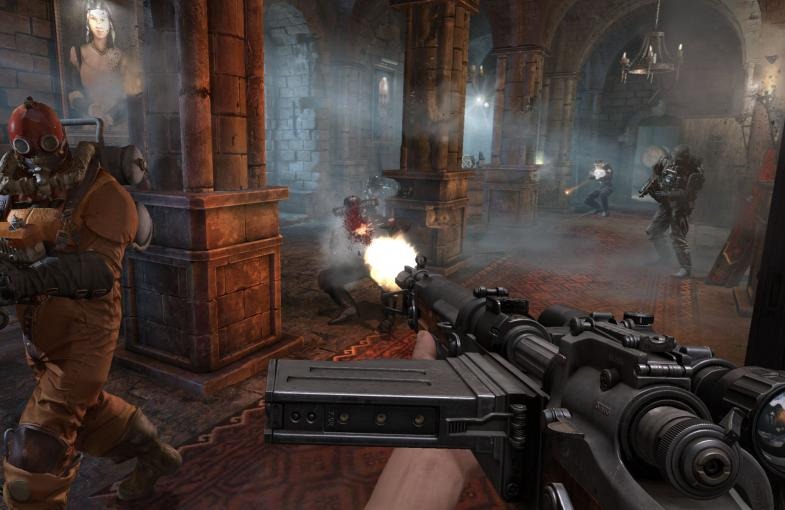
Google needs to improve the performance and reliability of its Stadia servers and expand its library with graphically demanding AAA titles that showcase the platform’s potential. Games like Destiny 2, The Witcher 3, AC: Odyssey, and Red Dead Redemption II (which was not tested) should demonstrate Stadia’s superior performance and gaming experience.
System Requirements
Google Stadia utilizes Google’s global network of servers. A Chromecast Ultra is required to stream to a TV, and the included controller is optional. Currently, the only way to access Stadia is by purchasing the Premier Edition or receiving a Buddy Pass from a Pro subscriber, which provides three months of access via a Chrome browser or Google’s Pixel phones. Support for additional devices is planned for the future.
Positives
Google Stadia has some positive aspects. The game controller is comfortable to hold, and the Wi-Fi connection performs better than expected. The design blends elements from the PS4 Dual Shock 4 and Xbox One Controller S, with softer trigger buttons.
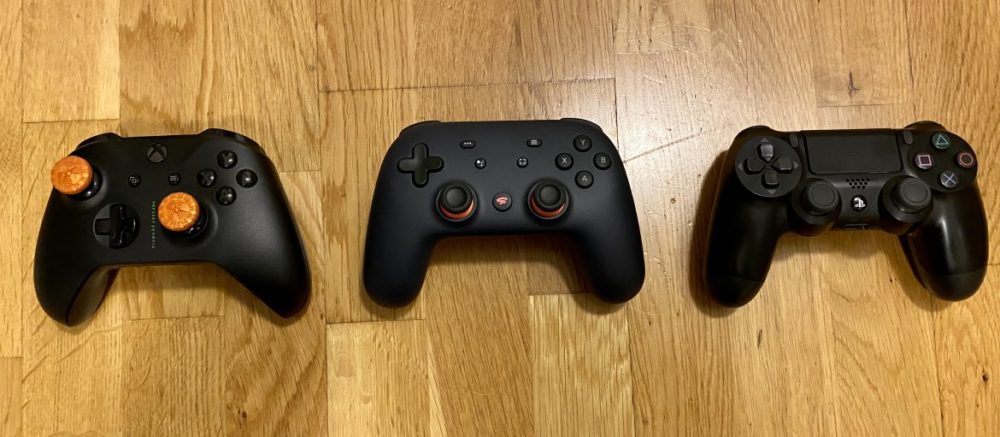
Google Stadia’s concept of format-neutral gaming is compelling. In the future, users should be able to seamlessly access games regardless of the underlying hardware. However, this vision is not yet realized. While pausing and resuming gameplay on another device is possible, its practical application is limited. Stadia feels primarily like a TV-based gaming platform. Google needs to invest significantly more resources and focus on improving the platform and refining its business model. The high price of individual games on a platform with a shaky launch and uncertain future is a significant deterrent.
Future Prospects
Despite its current shortcomings, Google Stadia has the potential to improve if Google addresses its issues. The platform’s initial launch was plagued by problems, including incorrect shipping addresses, missing invitation codes, and a confusing system for obtaining replacements. Google has acknowledged these issues and is working to resolve them. The platform’s initial backers experienced delays in accessing the service, despite their early commitment. This further damaged consumer confidence.
Currently, Google Stadia does not consistently deliver a satisfactory experience that justifies investment. Google should compensate early adopters for beta-testing the service. The platform was released prematurely.
We urge Google to address Stadia’s challenges, improve its game library, and refine its pricing model. Consumers expect more from a company of Google’s size, especially when competing with established gaming industry giants. We recommend retaining existing hardware and physical games for the foreseeable future.
The onus is now on Google to deliver.
